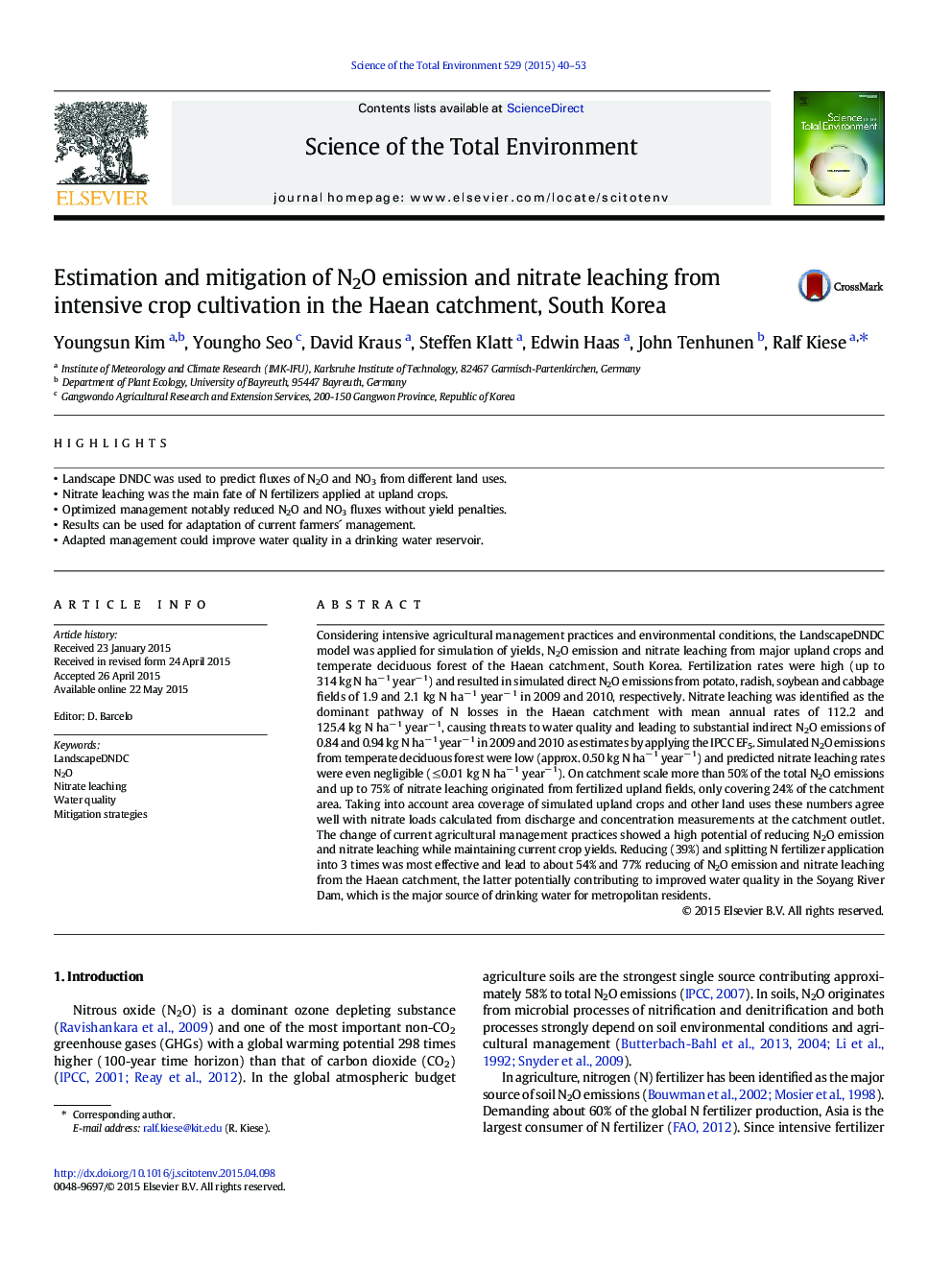| Article ID | Journal | Published Year | Pages | File Type |
|---|---|---|---|---|
| 6326351 | Science of The Total Environment | 2015 | 14 Pages |
Abstract
Considering intensive agricultural management practices and environmental conditions, the LandscapeDNDC model was applied for simulation of yields, N2O emission and nitrate leaching from major upland crops and temperate deciduous forest of the Haean catchment, South Korea. Fertilization rates were high (up to 314 kg N haâ 1 yearâ 1) and resulted in simulated direct N2O emissions from potato, radish, soybean and cabbage fields of 1.9 and 2.1 kg N haâ 1 yearâ 1 in 2009 and 2010, respectively. Nitrate leaching was identified as the dominant pathway of N losses in the Haean catchment with mean annual rates of 112.2 and 125.4 kg N haâ 1 yearâ 1, causing threats to water quality and leading to substantial indirect N2O emissions of 0.84 and 0.94 kg N haâ 1 yearâ 1 in 2009 and 2010 as estimates by applying the IPCC EF5. Simulated N2O emissions from temperate deciduous forest were low (approx. 0.50 kg N haâ 1 yearâ 1) and predicted nitrate leaching rates were even negligible (â¤Â 0.01 kg N haâ 1 yearâ 1). On catchment scale more than 50% of the total N2O emissions and up to 75% of nitrate leaching originated from fertilized upland fields, only covering 24% of the catchment area. Taking into account area coverage of simulated upland crops and other land uses these numbers agree well with nitrate loads calculated from discharge and concentration measurements at the catchment outlet. The change of current agricultural management practices showed a high potential of reducing N2O emission and nitrate leaching while maintaining current crop yields. Reducing (39%) and splitting N fertilizer application into 3 times was most effective and lead to about 54% and 77% reducing of N2O emission and nitrate leaching from the Haean catchment, the latter potentially contributing to improved water quality in the Soyang River Dam, which is the major source of drinking water for metropolitan residents.
Related Topics
Life Sciences
Environmental Science
Environmental Chemistry
Authors
Youngsun Kim, Youngho Seo, David Kraus, Steffen Klatt, Edwin Haas, John Tenhunen, Ralf Kiese,
